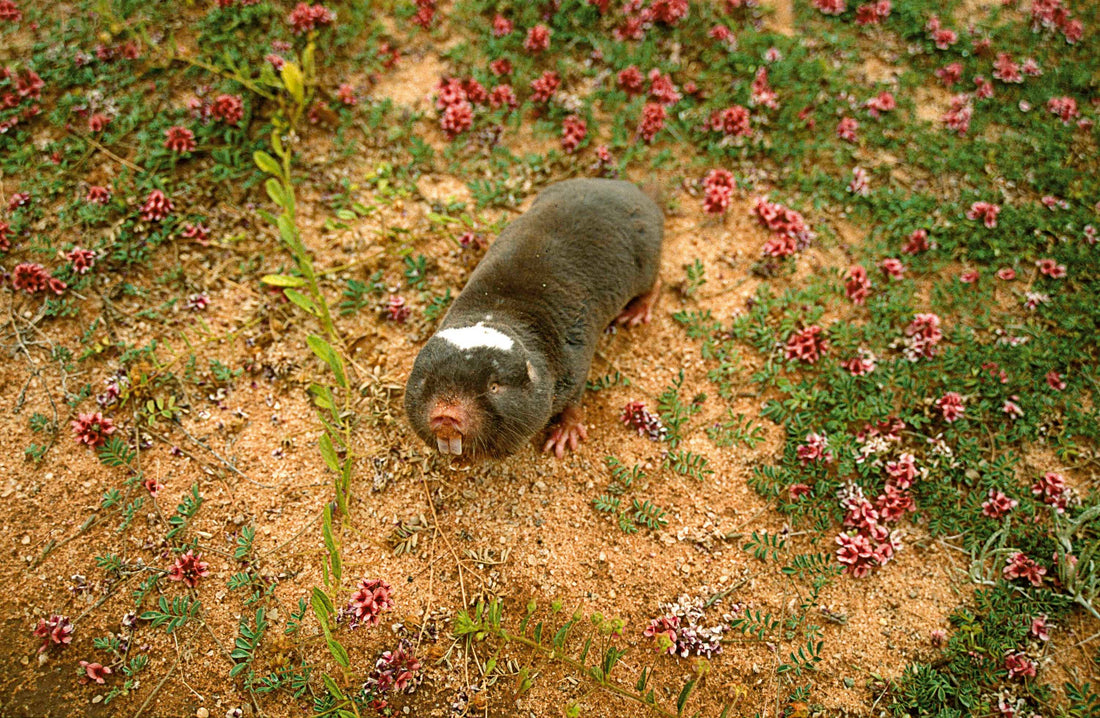These rats live in colonies occupying an underground tunnel system which they dig with their front teeth.
Dome-shaped mole hills are an indication of their presence but the tunnels are not connected to the surface. Most digging occurs after rainfall, since dry soil is too difficult to excavate. Because they live in arid environments, Damara mole-rats can be extremely active during short periods of rain. A typical colony has been estimated to excavate three tons of soil over a two-week period.
Damara mole-rats are only found where there is a sufficient supply of plants with underground storage organs. They are herbivorous, feeding solely on tubers, corms and bulbs. They do not drink, but obtain all the moisture they need from their food, which is also an important source of minerals.
Mole-rats have a fascinating social system. The colony in a burrow system has about 12 members consisting of a breeding pair and non-reproductive offspring. Within the colony there is a clearly defined hierarchy with the breeding male being dominant, followed by the breeding female, then non-reproductive males, and finally non-reproductive females.
From time to time mole-rats are seen above ground, for example when individuals leave the colony to establish a new burrow system. This usually occurs during rainy weather, ensuring that digging will be relatively easy once a suitable location has been found.


